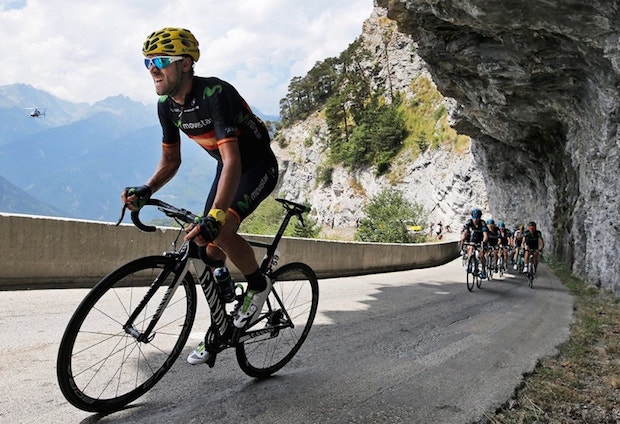If you are a cyclist, sooner or later, you’re going to encounter a hill. For some of us, this is an exciting time. For others, it’s a moment we dread.
If climbing raises your anxiety, here are six simple ways to make some big improvements.
Weight
The first place to start is with yourself. You are the engine that has to get to the top, and the size and power of that engine will determine how quickly you reach the summit. The best way to get up hills faster is to shift unnecessary bulk. By dropping a few pounds, you will notice a considerable difference in performance. This doesn’t need to be out-and-out dieting, just making small adjustments to your diet.
Practice
The best way to become a better climber is to climb. If you race or participate in events on hilly terrain, get in the habit of doing a hill climb workout once a week. Hill climbing should be done at a moderate intensity so keep your heart rate between 85 percent and 95 percent of your lactate threshold. For a higher intensity workout, perform 5- to 10-minute hill climbs at or slightly above lactate threshold. Ride downhill to recover and then head up again for a total of three or four hard efforts.
Find Your Power Position
To pull maximum air into your lungs, keep your back straight and your chest open. Position your hands on the brake hoods and relax your arms so your elbows sit wider than your hips. If you’re short, slide back on the saddle to generate more force through the top of the pedal stroke and to encourage your heel to drop through the bottom of the stroke. If you’re tall, slide forward, positioning your hips so they come close to lining up with the bottom bracket to generate maximum muscle force.
Keep It Relaxed
Focus on being relaxed but keeping powerful well rounded pedal strokes. Efficient power climbing is developed from a smooth powerful relaxed pedal strokes. For longer hills, stay seated and keep your cadence above 75 rpm. Keep your hands on the tops or the hoods, or alternate between both positions. For shorter climbs practice standing and keeping good balance and form.
Stay Out of the Red Zone
Another big mistake you can make while climbing is to ride past your lactate threshold, which is the point at which lactic acid begins to accumulate in the bloodstream and forces you to reduce your effort. This will make the remainder of the climb very difficult. It is much better to take it easy the first half of the climb and then pick up the pace in the second half.
Core
For efficient climbing, you need to work on your strength – more accurately, your core strength. A strong core is crucial in cycling for efficient power transfer on the bike. A solid core will mean stability through the hips and pelvis, which in turn equates to less side-to-side rocking and greater energy transfer, especially when climbing in the saddle.














